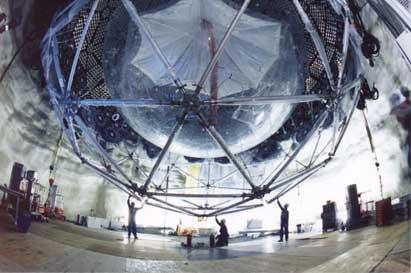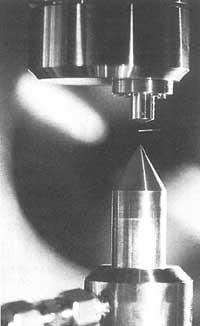Neutrinos at last!
2001/06/19 Roa Zubia, Guillermo - Elhuyar Zientzia
Neutrinos are particles smaller than the atom. They have no electric charge and their mass is very small. In addition, they are very difficult to detect as they hardly generate interactions.
In the early 1970s it was shown that the Sun was born-8. This element is not stable and, once created, it gradually transforms, emitting neutrinos, among others. But it is estimated that the Sun forms more neutral than those seen. Therefore, from that decade many theories were developed to have explanations about the amount lost.
There are three types of neutrinos: electroneutrino, muon-neutrino and lat-neutrino. Those of the Sun, that is, the ‘lost’ are electron neutrinos and, therefore, that type of neutrino was the one sought.
Experiments conducted in the 1990s showed that electron neutrinos can become muon neutrinos and beats. They have now measured this transformation at the SNO observatory. The detector is 2 kilometers below the ground surface, confined in a nickel mine. There they have two systems to capture neutrinos: the first can detect any type of neutron and the second detects electron neutrinos.
The number of neutrinos thus measured is exactly the same as calculated from the theoretical models of the Sun's nuclear reactions. This explains well the transformation of neutrinos emitted from the Sun.

Gai honi buruzko eduki gehiago
Elhuyarrek garatutako teknologia





